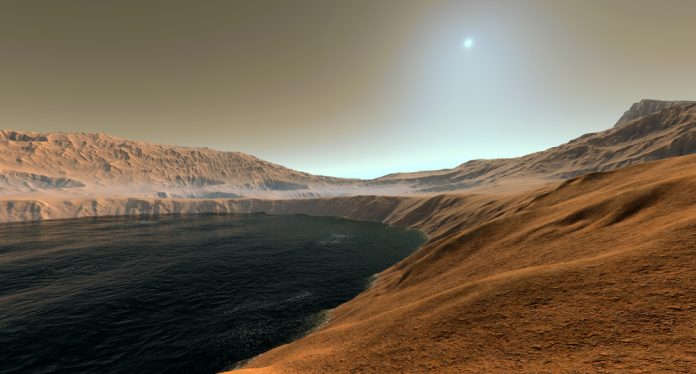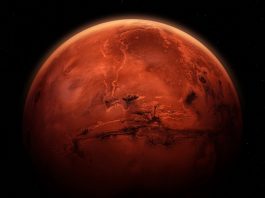Using seismic activity, geophysicists have found evidence of a large underground reservoir of liquid water on Mars.
The data from NASA’s Insight lander allowed the scientists to estimate that the amount of water on Mars could cover the entire planet to a depth of between 1 and 2 kilometres.
While that’s good news for those tracking the fate of water on the planet after its oceans disappeared more than 3 billion years ago, the reservoir won’t be of much use to anyone trying to tap into it to supply a future Mars colony.
It’s located in tiny cracks and pores in rock in the middle of the Martian crust, between 11.5 and 20 kilometres below the surface.
Even on Earth, drilling a hole a kilometre deep is a challenge.
Water on Mars may pinpoint habitable areas
The finding does pinpoint another promising place to look for life on Mars, however, if the reservoir can be accessed.
For the moment, it helps answer questions about the geological history of the planet.
“Understanding the Martian water cycle is critical for understanding the evolution of the climate, surface and interior,” said Vashan Wright, a former UC Berkeley postdoctoral fellow who is now an assistant professor at UC San Diego’s Scripps Institution of Oceanography.
“A useful starting point is to identify where water is and how much is there.”
The scientists employed a mathematical model of rock physics, identical to models used on Earth to map underground aquifers and oil fields, to conclude that the seismic data from Insight are best explained by a deep layer of fractured igneous rock saturated with liquid water.

“Establishing that there is a big reservoir of liquid water on Mars provides some window into what the climate was like or could be like,” said Micheal Manga, a UC Berkeley professor of earth and planetary science.
“And water is necessary for life as we know it, so I don’t see why the underground reservoir is not a habitable environment. It’s certainly true on Earth — deep, deep mines host life, and the bottom of the ocean hosts life.
“We haven’t found any evidence for life on Mars, but at least we have identified a place that should, in principle, be able to sustain life.”
Finally discovering where the water went
The researchers noted that extensive evidence—river channels, deltas, lake deposits, and water—altered rock—supports the hypothesis that water once flowed on Mars’ surface.
But that period ended more than 3 billion years ago after Mars lost its atmosphere.
Planetary scientists on Earth have sent many probes and landers to Mars to find out what happened to the water on the planet when it happened and whether life exists or used to exist on the planet.
The new findings are an indication that much of the water did not escape into space but filtered down into the crust.
The Insight lander was sent by NASA to Mars in 2018 to investigate the crust, mantle, core and atmosphere, and it recorded invaluable information about Mars’ interior before the mission ended in 2022.
“The mission greatly exceeded my expectations,” Manga concluded.
“From looking at all the seismic data that Insight collected, they’ve figured out the thickness of the crust, the depth of the core, the composition of the core, even a little bit about the temperature within the mantle.”









